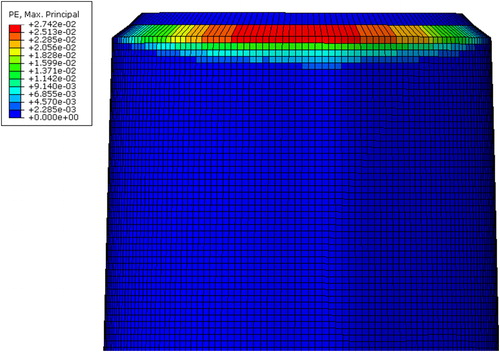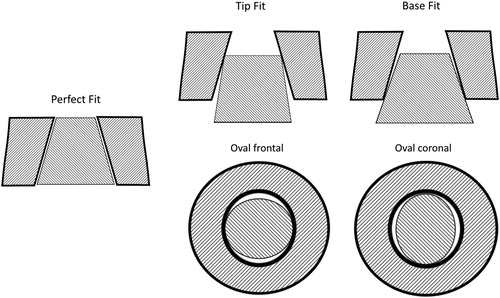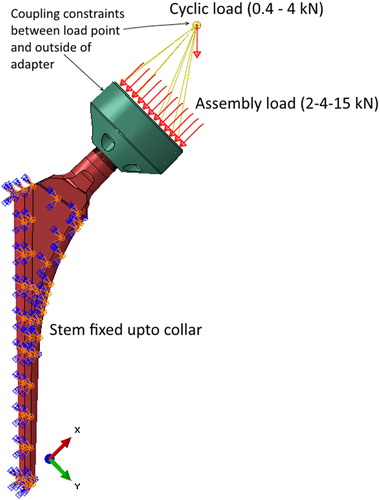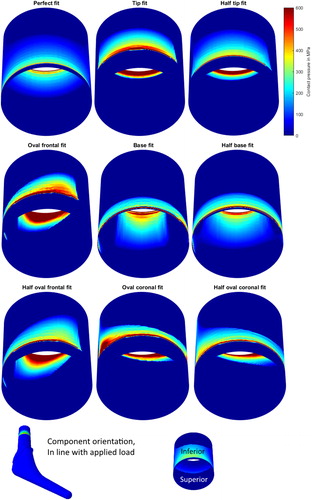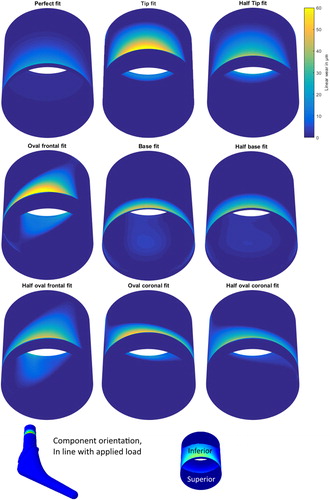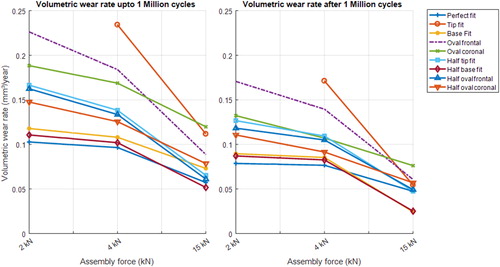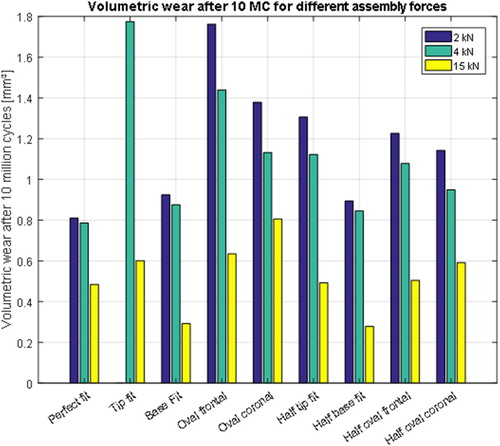Figures & data
Figure 3. Micromotion plots for junctions assembled with 4 kN. The darkest red color indicates micromotion values which are above 70 µm.
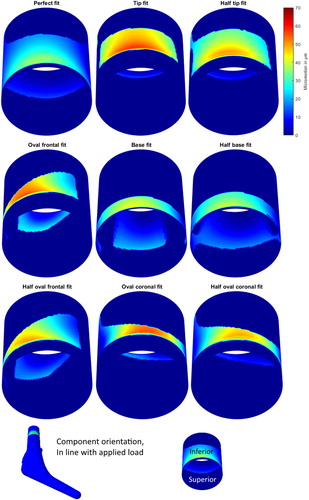
Figure 5. Plastic strain for 'Tip fit' assembled with 15 kN, and subsequently cyclic loaded, at the end of the simulation.
